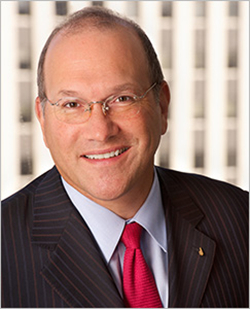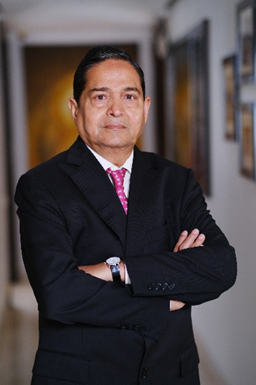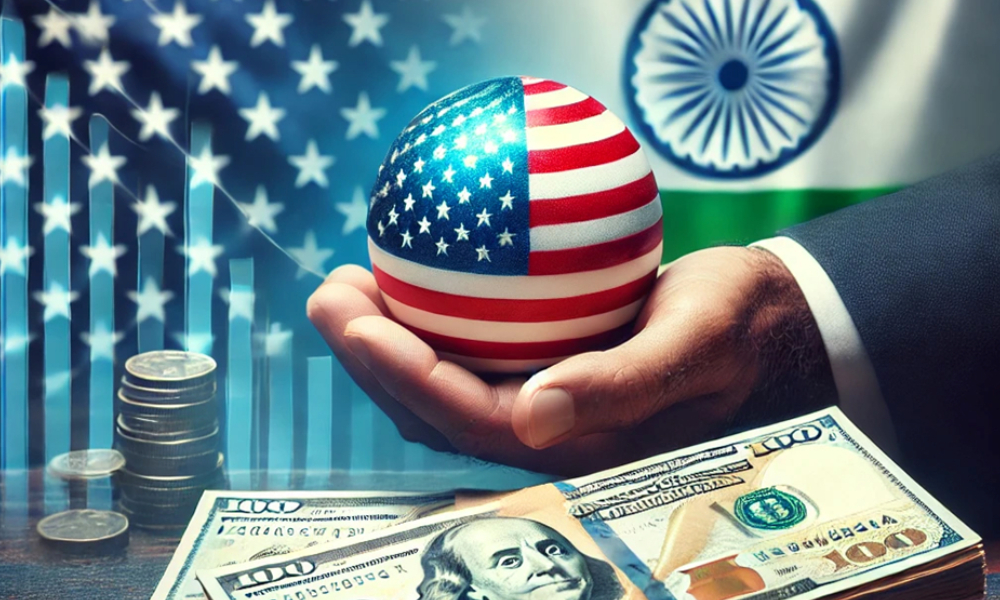The U.S. ‘Fair and Reciprocal Plan’ has prompted the Indian gem and jewellery sector to assess potential changes to its export dynamics.
India’s thriving gem and jewellery sector, a cornerstone of its export economy, faces a potential upheaval as the United States rolls out its “Fair and Reciprocal Plan” on Trade. Announced by President Donald Trump on 13th February 2025, the plan aims to address trade imbalances by imposing reciprocal tariffs—matching the rates other countries charge on American goods. For India, a key supplier of gems and jewellery to the U.S., this could mean tariffs ranging from 5% to 20% on its nearly $10 billion annual exports to the U.S., which could potentially lead to challenges in the sector that employs lakhs of workers.
India and the U.S. share a historically strong trade relationship in the gem and jewellery sector. In FY 2023-2024, India exported $32.85 billion-worth of gems and jewellery globally, with the U.S. consuming 30.28% ($9.95 billion). Meanwhile, in the Calendar Year 2024, India supplied 12.99% ($11.58 billion) of America’s total $89.12 billion gem and jewellery imports, as per U.S. International Trade Commission (USITC) data.
However, the U.S. runs a trade deficit of $6.27 billion with India in this sector, a gap the Trump administration seeks to narrow. The U.S. government is keen on matching India’s higher duties (average tariffs of 8.63%) against the U.S.’s current paltry rates (average tariffs of 3.17%). This is in the interest of “restoring fairness in U.S. trade relationships and countering non-reciprocal trading arrangements,” according to a White House statement.
India-USA G&J Trade Scenario (US$ Billion)
| Particulars | Time Period | Amount (US billion) / % share |
| India’s total exports of gem and jewellery | FY 2023-2024
|
32.85 |
| India’s exports of G&J to USA | 9.95 | |
| % share of USA in India’s G&J exports | 30.29% | |
| USA imports of G&J from the World | CY 2024 | 89.12 |
| USA imports of G&J from India | 11.58 | |
| % share of India in USA G&J imports | 12.99% |
Source: GJEPC Research Division based on DGCIS- FY2024 and USITC data 2024

Mr. Adil Kotwal, President, SEEPZ Gems & Jewellery Manufacturers’ Association (SGJMA), highlights, “The US’s proposed reciprocal tariff policy poses a serious threat to SEEPZ’s jewellery export sector, which accounts for 85% of India’s diamond-studded jewellery exports to the US. This industry is highly labour-intensive, directly employing 50,000 workers and supporting over 1 lakh more. A sudden tariff hike could severely impact exports, putting thousands of livelihoods at risk. We urge the Indian government to negotiate for a fair duty structure or consider lowering India’s import duty on US jewellery to a more reciprocal level.”
India’s exports to the U.S. include a diverse range of products: cut and polished diamonds ($5.6 billion), studded gold jewellery ($2.55 billion), plain gold jewellery ($267 million), lab-grown diamonds ($831 million), silver jewellery ($320 million), and more. However, gold jewellery and diamonds—key drivers of India’s exports—stand to suffer the most.
India’s tariffs on U.S. gold jewellery (20%) far exceed the U.S.’s rates of 5.5-7% on Indian gold jewellery. Similarly, India levies 5% on cut and polished diamonds, while the U.S. applies none. Under the reciprocal plan, the U.S. could raise tariffs on these Indian goods, potentially lowering exports.
Historical data underscores the risk: when the U.S. withdrew India’s Generalized System of Preferences (GSP) benefits in 2007, gold jewellery exports plummeted 50% from $2.21 billion to $1.01 billion within a year, recovering only after 15 years.

Mr. Dinesh Lakhani, Global Director, Kiran Gems Pvt. Ltd., states, “Reciprocal tariffs will be detrimental for India’s gem and jewellery exports as well as U.S. jewellery retail. After two years of softness, any price inflation from tariffs would impact demand. Small independent retailers in the U.S. and MSME exporters in India—both huge employment generators—will suffer most as a direct consequence of reciprocal tariffs.”

From the U.S. perspective, Mr. David Bonaparte, President & CEO of Jewelers of America, echoes concerns about rising costs: “If it is determined that India’s current tariffs are not fair compared to how India’s goods are imported to the U.S., then I assume that the U.S. will raise tariffs on India’s goods. This would ultimately raise prices for U.S. manufacturers and retailers.” However, he adds a note of cautious support for the policy’s intent, stating, “We support the Trump administration’s goal of strengthening trade relationships and creating fair and favourable terms for America. The jewellery industry is challenging at the moment, and we need policies that help our industry and partners do business.” Mr. Bonaparte emphasises that Jewelers of America “will continue to work to protect jewellers on legislative issues and would work with other industry stakeholders to push back on measures that would hurt the industry.”
The Gemological Institute of America (GIA) also acknowledges the potential ripple effects, with a spokesperson noting, “GIA is aware of proposals for a tariff regime that could potentially affect gems sent to GIA locations in the United States for grading and identification services, but we cannot speculate on how any potential tariffs might affect submissions.”
Reciprocal tariffs could prompt the U.S. to shift sourcing to countries like France, Italy, Switzerland, Jordan, and South Korea, where tariffs are lower or zero under Free Trade Agreements (FTAs). Jordan, for instance, enjoys duty-free access to the U.S., while France and Italy impose just 2.5% on U.S. jewellery—far below India’s 20%. Indian manufacturers might also relocate to Oman, Singapore, or the UAE to leverage lower tariffs or FTAs with the U.S.

Mr. Ajesh Mehta, Convener – Diamond Panel, the Gem & Jewellery Export Promotion Council (GJEPC), explains, “India exports larger stones to the U.S., where loose diamonds face no duty, but jewellery carries a 6% tariff. Centre stones go loose to the U.S. and are set there by American jewellers, while semi-mounts from India bear the 6% duty. If a 5%-6% tariff hits loose diamonds, it’ll drastically raise jewellery costs—a $10,000 stone jumps by $500-$600. This isn’t a win for the U.S.—it kills their jewellers’ labour advantage. Margins for Indian diamond manufacturers will vanish, sales will plummet, and rough diamond prices must drop 6% to compensate—or the trade shifts to Botswana and Namibia, where diamonds enter the U.S. duty-free. We must fight this; these are raw materials for their industry, not finished products.”

The impact could be particularly acute in regions like Jaipur, a hub for coloured gemstones. Mr. Arvind Gupta, President, Sitapura Gems and Jewellery Industry Association (SGJIA), states, “I believe the US is retaliating in this situation, and this is not a good position, especially for the Indian gems and jewellery industry. Both silver and gold jewellery export production will be impacted as India is already facing severe challenges in this area. If these US tariffs are implemented, the direct benefit will shift to countries like Thailand and Vietnam. Right now, India has a low volume of finished jewellery imports from America. So if we negotiate strongly with the US, we will be in a win-win situation. India must acknowledge this issue and take the right approach. I believe we should do so because we have the upper hand in this situation.”

In a joint phone call, Mr. Alok Sonkhia, President, Jewellers Association Jaipur (JAJ) and Mr. Neeraj Lunawat, Secretary, JAJ, caution, “The proposed reciprocal duties by the US government on Indian gem and jewellery exports, especially coloured gemstones, could severely impact the Jaipur industry. The US is our largest market, and increased tariffs would likely drive business to Thailand, which has a more favourable duty structure. This would jeopardise significant US orders and threatens the livelihoods of 150,000 coloured gemstone cutters and 300,000 workers in Jaipur’s overall gems and jewellery sector.”

Mr. Alkesh Shah, Vice Chairman of Goldstar Jewellery, outlines broader implications: “Increased tariffs could make Indian exports less competitive compared to destinations like Thailand, Vietnam, and Korea, affecting market share and profit margins. Supply chain disruptions might push manufacturers to explore alternative trade routes or shift production offshore. The industry, heavily reliant on skilled artisans and MSMEs, could experience significant strain if orders from US buyers decline.”

Similarly, Mr. Priyanshu Shah, Director of Asian Star, emphasises adaptability: “The U.S. remains a key market for India’s gem and jewellery exports, and any changes in the tariff structure will naturally have implications for trade dynamics. A reciprocal tariff framework could alter pricing structures and impact demand, particularly for key commodities like polished diamonds and finished jewellery.
“Higher tariffs may affect the cost competitiveness of Indian exports, making it crucial for the industry to focus on strengthening its value proposition and adaptability in an evolving global market. While it is still early to assess the full impact, such policy shifts highlight the need for strategic planning within the industry. Businesses will need to evaluate cost structures, enhance product differentiation, and optimise supply chains to sustain their competitive edge. Industry and policymakers must engage to ensure a balanced trade environment that fosters mutual prosperity and job creation.”

Mr. Colin Shah, Managing Director of Kama Jewelry, remains cautiously optimistic: “At this stage, we don’t anticipate an immediate impact, as discussions are ongoing at the government level. However, if implemented, tariffs will increase costs, affecting demand for diamonds, gold jewellery, and coloured gemstones. We’re optimising costs and strengthening our presence in Europe and the Middle East to diversify risks, but industry-wide collaboration and government engagement will be key to sustaining growth despite evolving trade policies.”
To mitigate the potential fallout, the industry proposes tariff concessions in a potential India-U.S. Free Trade Agreement (FTA). Recommendations include slashing India’s tariffs on polished diamonds and lab-grown diamonds from 5% to 2.5%, reducing gold, silver, and platinum jewellery tariffs from 20% to 17%, and cutting duties on precious metals like gold bars from 5% to 4%. These measures could boost U.S. exports to India—projected to rise by $6.23 billion, including 65 tons of gold ($6 billion)—and narrow the trade deficit. Kotwal urges, “We need the Indian government to negotiate for a fair duty structure or consider lowering India’s import duty on US jewellery to a more reciprocal level.”

Mr. Kirit Bhansali, Chairman, GJEPC, comments: “Our industry has already flagged its concerns over US reciprocal tariffs, and we trust our government to address them. With Hon’ble Prime Minister Shri Narendra Modi and Hon’ble Commerce & Industry Minister Shri Piyush Goyal actively engaging in bilateral trade discussions, we are confident that a resolution will be reached to safeguard India’s gem and jewellery exports.
“This policy could necessitate adjustments to maintain India’s dominance in the U.S. market, where we hold substantial shares in cut and polished diamonds (45.09%), gold jewellery (24.61%), and worked lab-grown stones (92.17%). The Indian gems and jewellery industry is not just an economic powerhouse but also a lifeline for directly employed over 2 lakh people who depend on it for livelihoods, many of whom are from economically weaker sections, including a significant number of women.”
Meanwhile, As the U.S. pushes for trade fairness, India’s gem and jewellery sector braces for a challenging road. The Indian gem and jewellery industry calls for mutually agreeable tariff negotiations, to prevent India from losing market share to competitors and facing economic disruption. With the reciprocal plan’s implementation looming, stakeholders are urged to act swiftly to safeguard this vital industry.

